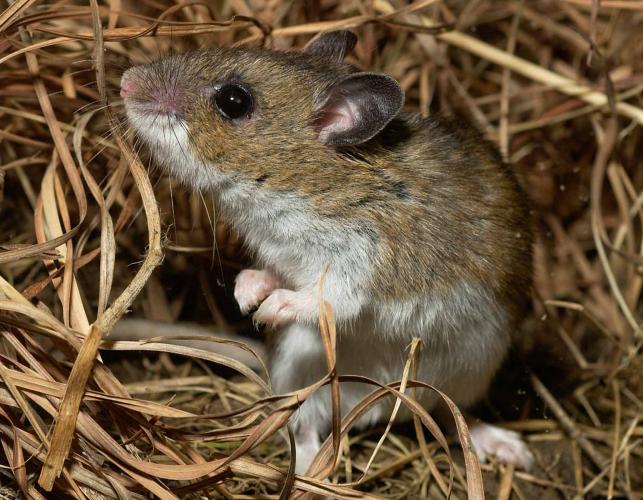Deer Mouse America: A Fascinating Species

The Deer Mouse, scientifically known as Peromyscus maniculatus, is a small rodent native to North America. This species is widely distributed across the continent, from Alaska to Central America. Known for its distinctive appearance and adaptability, the Deer Mouse has captured the attention of researchers and nature enthusiasts alike. In this article, we will delve into the intriguing world of the Deer Mouse, exploring its habitat, behavior, diet, and significance in the ecosystem.
Habitat and Distribution
The Deer Mouse is highly adaptable and can be found in a variety of habitats, including forests, grasslands, deserts, and even urban areas. Its extensive range spans from the Arctic tundra in Alaska to the highlands of Mexico. This remarkable adaptability has allowed the species to thrive in diverse environments, making it one of the most successful rodents in North America.
These mice are particularly abundant in forested areas, where they can be found nesting in tree hollows, logs, or underground burrows. Their nests are often constructed using plant materials such as leaves, grass, and moss. The Deer Mouse is primarily nocturnal, preferring to venture out under the cover of darkness to forage for food and explore its surroundings.
Behavior and Reproduction
Deer Mice are solitary creatures, with each individual staking out its own territory. They are known for their agility and excellent climbing skills, allowing them to navigate through trees and shrubs with ease. These mice are also skilled jumpers and can leap impressive distances to escape predators or reach food sources.
During the breeding season, which typically occurs from spring to early fall, Deer Mice engage in elaborate courtship rituals. Males will emit high-pitched vocalizations and perform intricate displays to attract females. Once a pair has formed, they will mate and the female will give birth to a litter of typically four to six pups. The young are born blind and hairless, but they develop rapidly and are weaned after about three weeks.
Diet and Foraging
Deer Mice are omnivorous, meaning they consume both plant matter and small invertebrates. Their diet primarily consists of seeds, nuts, berries, insects, and fungi. These mice have a remarkable ability to store food for future use, often hoarding seeds and nuts in their nests or burrows. This behavior is particularly important during the winter months when food sources may become scarce.
In addition to foraging on the ground, Deer Mice are adept climbers and can access food sources in trees and shrubs. They have been observed feeding on the buds, flowers, and fruits of various plant species. This dietary flexibility allows them to adapt to changing environmental conditions and ensures their survival in a wide range of habitats.
Ecological Significance
The Deer Mouse plays a crucial role in the ecosystem as both a predator and prey species. They are known to consume a variety of insects, including agricultural pests, helping to control their populations naturally. Additionally, these mice serve as a vital food source for many predators, such as owls, snakes, foxes, and coyotes.
Furthermore, Deer Mice contribute to seed dispersal by caching and forgetting seeds in various locations. This behavior aids in the regeneration of plant species and promotes biodiversity within their habitats. Their burrowing activities also help aerate the soil and facilitate nutrient cycling.
Conclusion:
The Deer Mouse is a remarkable species that has successfully adapted to a wide range of habitats across North America. Its agility, adaptability, and dietary flexibility have allowed it to thrive in diverse environments. From its solitary behavior and courtship rituals to its important ecological role, this small rodent continues to captivate researchers and nature enthusiasts alike. By understanding and appreciating the Deer Mouse, we gain valuable insights into the intricate web of life that exists within our ecosystems.



